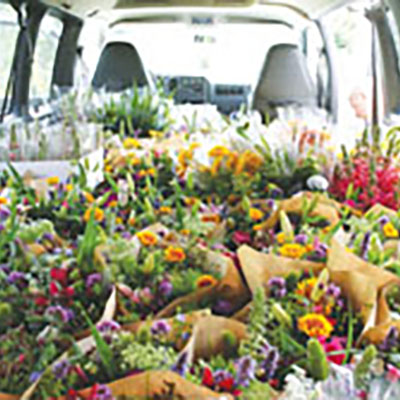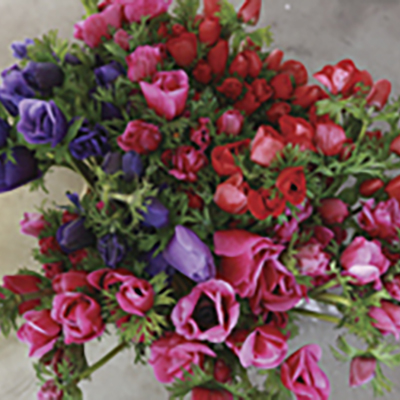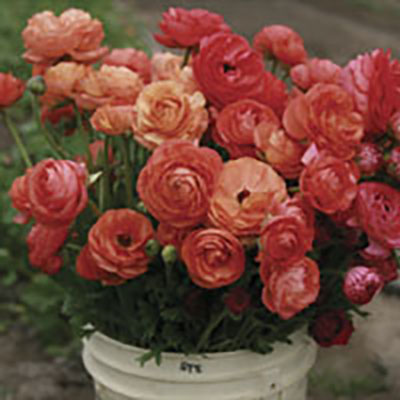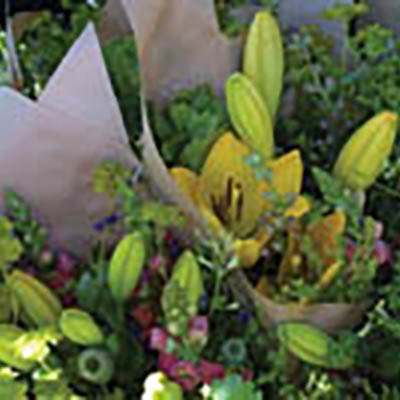Our little flower farm churns out tens of thousands of mixed bouquets and straight bunches every summer for grocery stores, flower shops, and event designers. I am always on the lookout for varieties that are both extremely productive and popular with our customers, who tend to be attracted to new and unusual varieties. Finding flowers that fall into both categories, high-yielding and eye-catching, can be challenging. That’s why I put on variety trials each season, in hopes of discovering new treasures, and finding the very best of the best.
A few years ago I started experimenting with black-eyed Susans (Rudbeckia) and grew every single variety I could get my hands on. This group of plants is massive and is filled with so many choices that it can be hard to know which ones to choose. When it comes to varieties best suited for cutting, I suggest sticking with the taller Rudbeckia hirta and the wildly abundant Rudbeckia triloba, at least to start with. They will bless you with buckets and buckets of blooms over the longest period of time, and while technically considered perennials, both do best when sown early and grown as annuals.
This group of plants has proven to be a real workhorse and I highly recommend tucking at least a row or two into your field. Rudbeckia like full sun, rich soil, and a steady supply of water. They are heat tolerant, low maintenance, and crank out an abundance of flowers from midsummer through autumn. They have long, strong stems and are well suited for mixed bouquets and straight bunches.
Of all the varieties that I’ve grown, these are my top picks.
Rudbeckia hirta Cherokee Sunset Mix
One of the tallest for cutting, this mix is filled with large, double-flowered types in rust, bronze, gold, chocolate, and many eye-catching bicolor flowers. The palette is the epitome of early autumn and pairs well with grasses, grains, and pods.
Rudbeckia hirta ‘Cherry Brandy’
A breakthrough introduction, this beauty is the first-ever red variety available from seed. Its deep maroon red petals surround a dark chocolate center and look incredible when combined with other moody plant materials, such as ‘Queen Red Lime’ zinnias and ‘Aromato’ basil. It’s a favorite with our floral designer customers!
Rudbeckia hirta Chim Chiminee Mix
This rust-toned mix is one of my favorite late summer/early autumn bloomers. The large flower heads and fuzzy quilled petals are striking in shades of chocolate, bronze, rust red, gold, and burnt orange. I love pairing this variety with dark sunflowers and ninebark foliage. For more on ninebark, see the article “Favorite perennials for flower growers” in the November/December 2016 issue of Growing for Market.
Sahara Mix is in front, Chim Chiminee Mix in back.
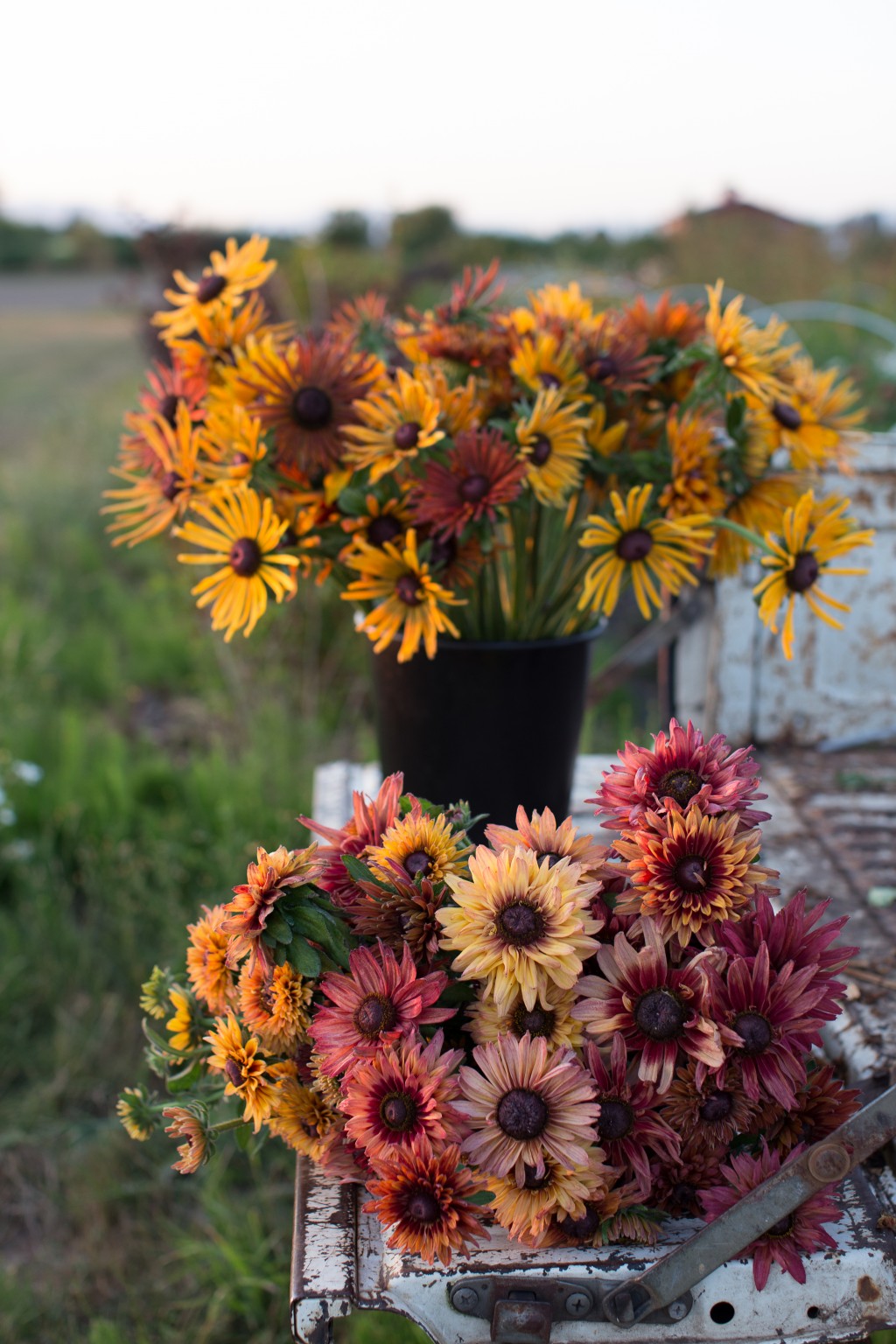
Rudbeckia hirta ‘Denver Daisy’
This eye-catching variety boasts large golden yellow blooms with dark chocolatey red centers that look as if they’ve been hand-painted. No two are exactly the same, and the unique coloring makes these beauties a must-grow.
Rudbeckia hirta ‘Indian Summer’
One of the largest flowering varieties, this semi-double monster produces blooms that range from 4 to 7 inches across. The school bus yellow petals are beautifully accented with the clear black eye. This is a staple variety in our summer bouquets.
Rudbeckia hirta ‘Prairie Sun’
This tall, freely blooming variety is always a favorite bouquet addition. Its bicolor petals are a cheerful mix of dark and light yellow that radiate around the pretty apple green center. Because of its fresh coloring, it mixes beautifully with pastel shades.
Rudbeckia hirta Sahara Mix
This mix of large, mostly double, velvety flowers is a blend of dusty rose, milk chocolate, copper, pale lemon, and rich merlot. These abundant bloomers are a wonderful new addition to the black-eyed Susan family, offering a romantic, moody twist on an old garden staple. This is a favorite with high end floral designers.
Sahara mix all by itself. Photos courtesy of Erin Benzakein.

Rudbeckia triloba
Of all of the black-eyed Susans I’ve ever grown, this is my absolute favorite. By midsummer this variety can easily reach a towering 5 to 6 feet tall, with individual plants producing up to 30 stems each! The miniature-sized flowers are borne in airy sprays, and when added to arrangements, they bring a happy, uplifting quality. If you make market bouquets, this is a must-grow.
We start our first round of seeds about 10 weeks before the last spring frost and transplant out after all danger of frost has passed. We plant another succession one month after the first sowing, around 6 weeks before the last spring frost, and are rewarded with truckloads (literally!) of flowers from midsummer through autumn. Plants get quite bushy, so we give them a little extra space to spread out, with 4 rows per bed and 12 inches between plants. All of the varieties I’m sharing here grow tall and have a tendency to topple over in full bloom without proper support, so I recommend netting them early to avoid a frustrating mess.
Black-eyed Susans are considered a “dirty flower” and are notorious for making their water murky within a matter of hours. To combat this and extend their vase life, add a few drops of bleach or add a CVBN chlorine tablet to the water. Harvest black-eyed Susans when flowers are beginning to open, and you can expect a 7 to 10 day vase life if floral preservative is used. Stems are covered in tiny hairs that can make your skin itch, so be sure to wear gloves and long sleeves when harvesting.
Seed is a tad bit on the expensive side, but the plants are so productive that the cost is quickly recouped. You can find seed at Johnny’s Selected Seeds, Gloeckner, Floret, Geo, and Ivy Garth.
Erin Benzakein runs Floret, a small organic flower farm and mail order seed company in Washington’s Skagit Valley. www.floretflowers.com Her new book, Floret Farm's Cut Flower Garden: Grow, Harvest and arrange stunning seasonal blooms is available from Growing for Market.
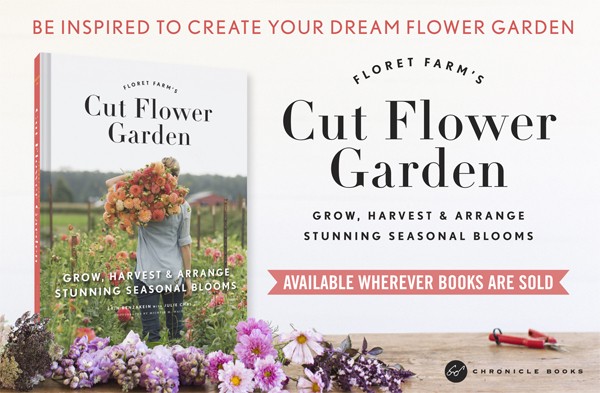


 For most established growers, the easiest place to start selling flowers will be mixed bouquets and single stem/small bunch retail sales. These are the flowers you can sell to your existing customers and they are easy to incorporate into farmers market, CSA, and grocery sales. But there are lots of other outlets out there, including florists, weddings and events, business subscriptions, value added products, and wholesalers.
For most established growers, the easiest place to start selling flowers will be mixed bouquets and single stem/small bunch retail sales. These are the flowers you can sell to your existing customers and they are easy to incorporate into farmers market, CSA, and grocery sales. But there are lots of other outlets out there, including florists, weddings and events, business subscriptions, value added products, and wholesalers.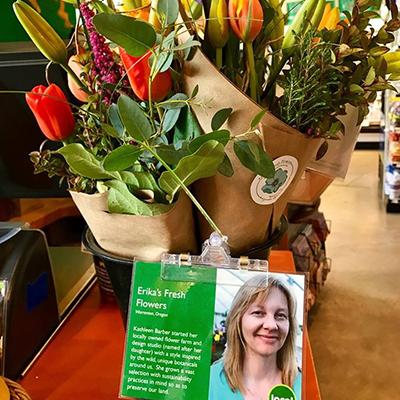
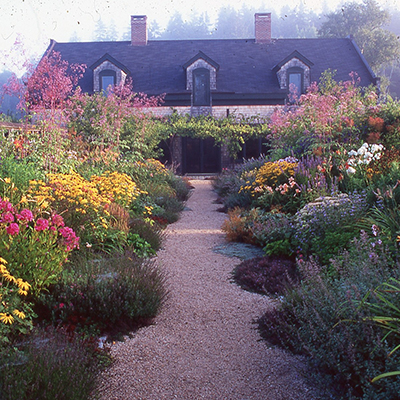
 Since its founding in 1968 by my husband Eliot Coleman, Four Season Farm has sought to produce the best vegetables possible, using soil-based organic methods, on a small amount of land. When I showed up in 1991, Eliot had begun to pioneer winter vegetable production, and I was delighted to give up the landscape design business I’d run in Connecticut and grow veggies with him. Then, about 10 years ago, flowers started to creep in.
Since its founding in 1968 by my husband Eliot Coleman, Four Season Farm has sought to produce the best vegetables possible, using soil-based organic methods, on a small amount of land. When I showed up in 1991, Eliot had begun to pioneer winter vegetable production, and I was delighted to give up the landscape design business I’d run in Connecticut and grow veggies with him. Then, about 10 years ago, flowers started to creep in.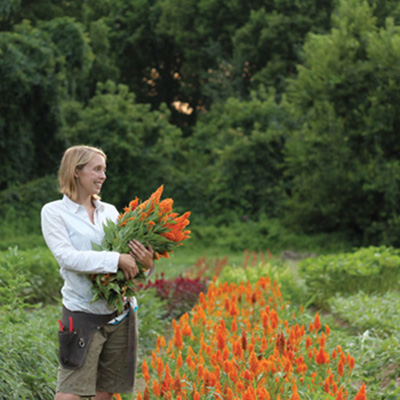
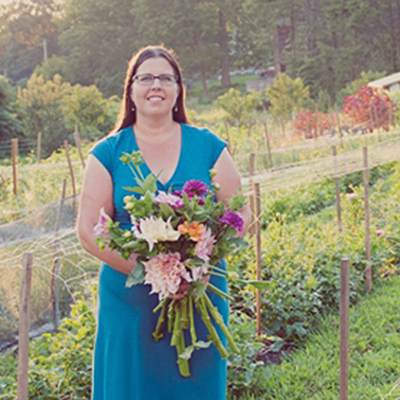
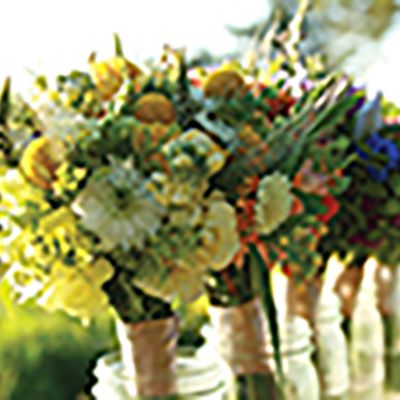
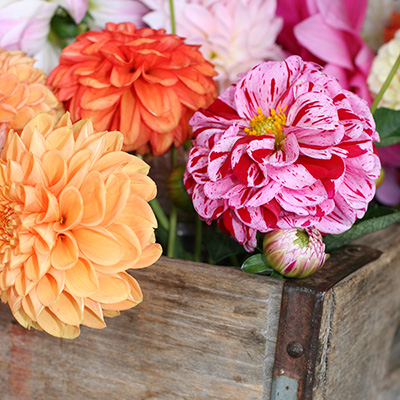
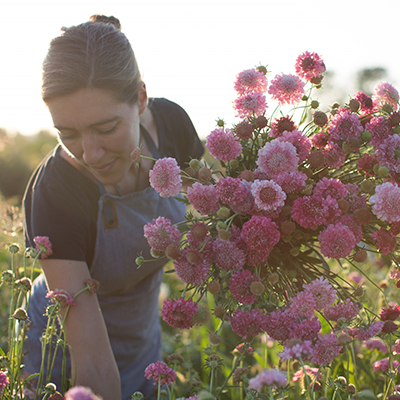
 Marketing is the other half of the battle
Marketing is the other half of the battle